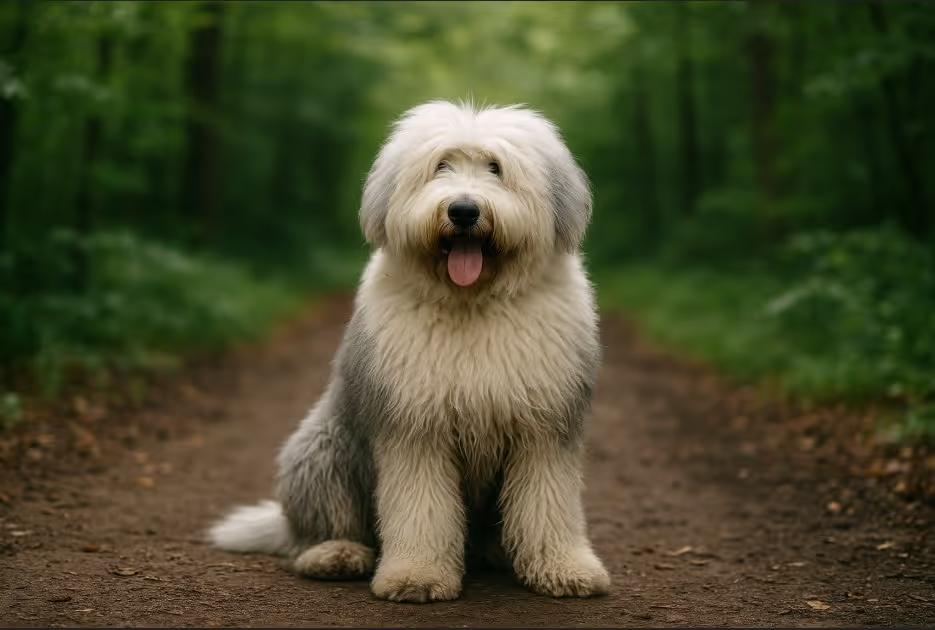The Old English Sheepdog is a large, shaggy-coated herding breed with a big heart and an unmistakable “bear-like” shuffle. Known for their gentle temperament, intelligence, and iconic fluffy appearance, these dogs make affectionate family companions and excel in homes that can provide daily exercise and grooming. Once bred to drive cattle and sheep to market, the Old English Sheepdog retains its playful, hardworking nature and thrives in active households that enjoy the outdoors.

The Old English Sheepdog originated in England in the early 19th century, developed as a drover’s dog to move sheep and cattle from rural farms to market. Although called “Old English,” the breed is relatively modern compared to ancient herding dogs and was likely developed from crosses between bearded collies and various European sheepdogs. The breed’s characteristic docked tail once earned it the nickname “bobtail.” Recognized by the American Kennel Club in 1888, the Old English Sheepdog is now more often found in family homes than on farms, but its herding instincts remain strong.
A large, muscular, and well-balanced herding dog covered in a thick, shaggy double coat.
The Old English Sheepdog’s coat requires significant maintenance to stay healthy and free of mats.
An active breed that needs daily activity for both mind and body.
Highly intelligent and eager to please, but sometimes independent.
A nutrient-rich diet supports their large size and energy needs.
Generally healthy but susceptible to certain large-breed conditions.
Old English Sheepdogs are available through reputable breeders and rescue organizations.
Are Old English Sheepdogs good family dogs?
Yes, they are affectionate, playful, and gentle with children.
Do they shed a lot?
Yes, they shed moderately year-round and more heavily seasonally.
Are Old English Sheepdogs hypoallergenic?
No, they are not hypoallergenic.
Do they bark a lot?
They may bark to alert, but excessive barking can be curbed with training.
Are they easy to train?
Yes, they are intelligent and eager to please but need consistent guidance.
Can they live in apartments?
Not ideal due to their size and exercise needs, but possible with commitment to daily activity.
How much grooming do they need?
Significant—multiple brushings per week and regular professional grooming.